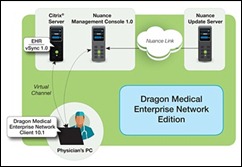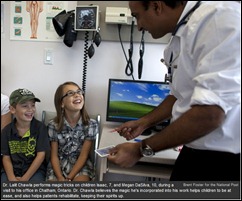Intelligent Healthcare Information Integration 9/10/10
EHR Mountains and Molehills
Way back in days of yore, when I was but a naïve EHR pup looking into systems which might be suited for me and my one-doc practice, I clearly remember thinking how I wanted to be certain that whichever system I ended up choosing, I wouldn’t end up as a corporate afterthought. Once the big boys (or girls) had my money, I worried I might become but a faint, far-off voice, more of a gnat when I had a problem than a lion whose roar could not be ignored.
Not only had I read and heard tales of just such woes, I had experienced the uppitiness of some of the bigger vendors’ sales reps first hand. I had many a demo in my office or at various events where the “show” had a constant underpinning of “see how wonderful we are” followed by a slightly upturned nose as they sat back in their chairs with a smug sense of “there’s no way a little, one-horse doc like you won’t be hyper-impressed by our magnificence.”
Not that I was, or am, any great shakes EHR reviewer, but I knew just as much then as I do now about what looks good to my eyes and about what made medical workflow sense. Frankly, most of the big systems weren’t very small-user-friendly, plus, they looked kind of ugly. (And, to top it off, I detest smugness.)
I was on a quest; I wanted to find a good-looking system (at least one that suited my eyes) and I wanted to find a company which I felt would value me as much after I had paid the price of admission as they did before. I finally settled on a system and a company which I thought fit that bill to a proverbial “T.” The system was very high tech, very customizable, very attractive, and very workflow-centric. The company was small, but the people were phenomenal, the kind of people I’d want my children to emulate. They promised to keep me, and pediatrics as a whole, as primary considerations. And they did.
I believe our partnership was mutually beneficial. I helped their company grow and helped them flesh out some important elements of their system’s design. They kept my concerns addressed just as if I were their only client. I felt well-matched and well-considered.
But, then … then came the mergers/acquisitions. Up one step, up another step, and now, up into the Himalayas (or, at least, the high Sierra Madres). What I worried about with each step was whether I would continue to have the feeling that I was still a valuable client despite my Nowhere, Ohio, address. I was fortunate that along each step up, my little guy concerns continued to be considered. Up step one, up step two, each seemed to value little trench grunts (or at least they made me feel that they did).
Getting noticed when you have an issue among molehills is one thing; it concerns me that no one will hear my screams if I fall in the midst of the mountains. So, Glen, while I doubt you’ll have the time to be reading my measly blog submission, I sure hope someone on your (our) new team still notices us little guys and realizes that, en masse, we have a lot to offer that is distinct from all the large groups and institutional players with their colossal checks. (Ours will also be colossal; you just have to cash a whole bunch of them to attain colossal-ality. Sort of like Seinfeld with all of his twelve-cent royalty checks from a Japanese TV show appearance.)
From the molehills…er, mountains…er, still in the trenches…
“It’s the sides of the mountain that sustain life, not the top.” – Robert M. Pirsig

Dr. Gregg Alexander, a grunt in the trenches pediatrician, directs the “Pediatric Office of the Future” exhibit for the American Academy of Pediatrics and is a member of the Professional Advisory Council for ModernMedicine.com. More of his blather…er, writings…can be found at his blog, practice web site or directly from doc@madisonpediatric.com.










The article about Pediatric Associates in CA has a nugget with a potentially outsized impact: the implication that VFC vaccines…